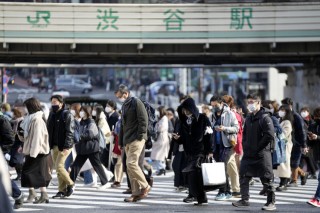Loading
Search
▼ Japan's November Jobless Rate Rises To 2.8% As People Seek Better Jobs
- Category:Other
Japan's unemployment rate in November edged up to 2.8 percent from the previous month as an economic recovery from the coronavirus fallout prompted more people to leave their jobs in search of better ones, the government said Tuesday.
The seasonally adjusted jobless rate rose 0.1 percentage point from the previous month for the first increase in six months, after the COVID-19 state-of-emergency measure asking people to refrain from nonessential outings was lifted in October following a significant drop in the number of infections.
Separate government data from the Ministry of Health, Labor and Welfare showed the job availability ratio in November was unchanged from the previous month at 1.15, meaning that there were 115 job openings for every 100 job seekers.
The total number of unemployed people in November increased 100,000 from the previous month to 1.92 million, rising for the first time in three months, the Ministry of Internal Affairs and Communications said.
Among them, 760,000 people voluntarily left their jobs, up 60,000, while 480,000 were laid off, unchanged from the previous month, and 500,000 were new job seekers, up 10,000.
"The increase in the number of unemployed indicates that more people are seeking jobs with better conditions and is considered to be a reflection of the recent lower number of coronavirus cases and (an economic) pickup," a government official told reporters.
Private-sector analysts also said daily COVID-19 cases dropping to around 250 or lower in the reporting month compared to a peak of over 25,000 in the summer helped give workers a more optimistic view of the outlook for the domestic economy.
Megumi Wada, a researcher at the Daiwa Institute of Research, said the increase in the jobless rates for people aged between 15 and 24 as well as 35 and 44 show that people who had refrained from switching careers started looking for new jobs.
The seasonal adjusted jobless rate for the former age group saw a 1.1 percent increase from the previous month, while the latter was up 0.3 percent.
Looking ahead, Wada said the labor market is expected to recover, led by improvements in the face-to-face service sector such as the lodging industry and eateries that are experiencing labor shortages as more people go out.
"For this year, the number of reservations for shinkansen (bullet trains) and airplanes is increasing, indicating more people are planning to return to their hometowns (in the year-end and New Year holidays)," Wada said.
"If Go To Travel is resumed, demand in the service sector will get a further boost," she said, referring to a government subsidy program envisaged to start in February to prop up the pandemic-stricken domestic tourism sector.
The program was suspended nationwide in December last year following a spike in new virus cases.
In the accommodation and food service sector as well as the wholesale and retail sector, the number of workers, unadjusted for seasonal factors, continued to fall from a year earlier, but the pace of decline slowed, indicating improvements in their labor markets, the official said.
The number of workers in hotel and restaurant services fell 190,000 from a year earlier in the reporting month following a 440,000 drop marked in October, while the number in wholesale and retail was down 120,000 year on year after shrinking 320,000 in October.
Meanwhile, the number of workers in the telecommunications industry, and in transport and postal activities, continued to increase, rising 9.3 percent and 5.5 percent from a year earlier, respectively.
The latest data showed the total number of people in work remained unchanged from the previous month at a seasonally adjusted 66.24 million.
© KYODO
- December 28, 2021
- Comment (0)
- Trackback(0)


